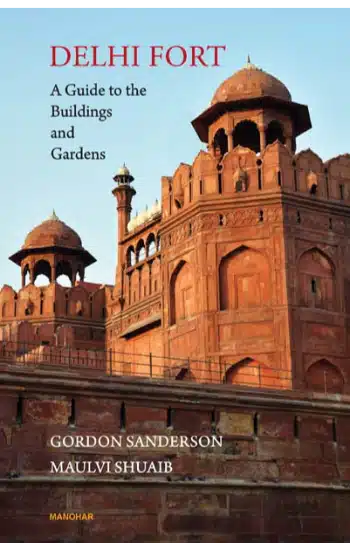
Save: 15%

Save: 15%
Delhi Fort: A Guide to the Buildings and Gardens
Publisher:
| Author:
| Language:
| Format:
Publisher:
Author:
Language:
Format:
₹595 ₹505
Save: 15%
In stock
Ships within:
In stock
| Book Type |
|---|
ISBN:
Page Extent:
Elphinstone had once said, ‘Shahjahan’s greatest splendour was shown in his buildings’. In 1638, Shahjahan, the Mughal emperor, decided to move his capital to a newly constructed city in Delhi. Along with the construction, he laid the foundations of his palace, the Red Fort. The fort complex is considered to represent the zenith of Mughal creativity. Though the palace was planned according to Islamic prototypes, each pavilion contains architectural elements typical of Mughal buildings that reflect a fusion of Persian, Timurid and Hindu traditions. The fort’s innovative architectural style, including its garden design, was a piece of astounding beauty and architectural perfection. It influenced later buildings and gardens in Delhi, Rajasthan, Punjab, Kashmir and elsewhere. This book is a detailed guide to this Fort and its buildings and gardens including Lahori Gate, Delhi Gate, Naubat Khana, Diwan i aam, Diwan i khaas, Nahr i Bihisht, Mumtaz Mahal, Rang Mahal, Khas Mahal, Hammam, Moti Masjid, Hira Mahal, Hayat Bakhsh?Bagh,?and?Shahi?Burj. About the Author Gordon Sanderson (1856-1915) was an officer with the Archaeological Survey of India. He is best known for his works in preserving and documenting?the?historical?monuments?of?India.
Elphinstone had once said, ‘Shahjahan’s greatest splendour was shown in his buildings’. In 1638, Shahjahan, the Mughal emperor, decided to move his capital to a newly constructed city in Delhi. Along with the construction, he laid the foundations of his palace, the Red Fort. The fort complex is considered to represent the zenith of Mughal creativity. Though the palace was planned according to Islamic prototypes, each pavilion contains architectural elements typical of Mughal buildings that reflect a fusion of Persian, Timurid and Hindu traditions. The fort’s innovative architectural style, including its garden design, was a piece of astounding beauty and architectural perfection. It influenced later buildings and gardens in Delhi, Rajasthan, Punjab, Kashmir and elsewhere. This book is a detailed guide to this Fort and its buildings and gardens including Lahori Gate, Delhi Gate, Naubat Khana, Diwan i aam, Diwan i khaas, Nahr i Bihisht, Mumtaz Mahal, Rang Mahal, Khas Mahal, Hammam, Moti Masjid, Hira Mahal, Hayat Bakhsh?Bagh,?and?Shahi?Burj. About the Author Gordon Sanderson (1856-1915) was an officer with the Archaeological Survey of India. He is best known for his works in preserving and documenting?the?historical?monuments?of?India.
About Author
Reviews
There are no reviews yet.
Related products
RELATED PRODUCTS
Harappan Studies: Recent Researches In South Asian Archaeology (Vol. I)
Save: 15%
Physics Set Of 2 Books: Vol.1 And Vol. 2
Save: 25%
VEDIC BELIEFS AND PRACTICES THROUGH ARTHAVADA (Set of 2 Vols.)
Save: 15%



Reviews
There are no reviews yet.